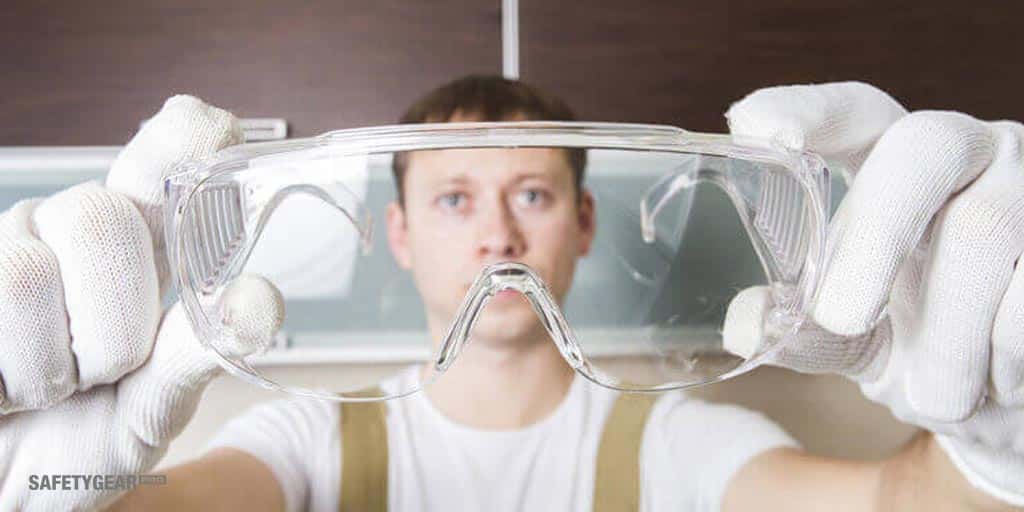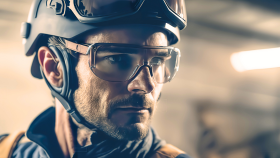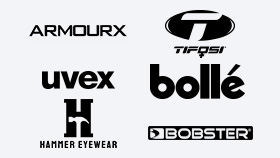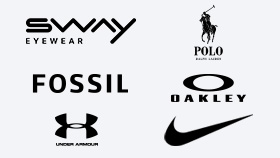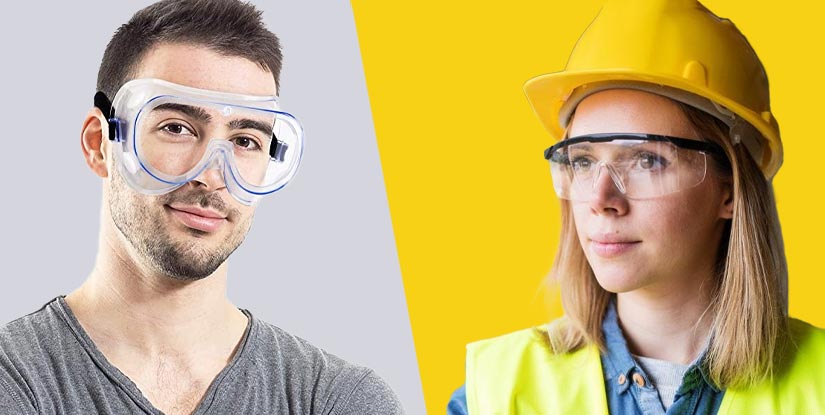
Protecting your eyesight is always a priority, especially when engaging in higher-risk activities. Eye hazards are common during a home improvement project or at your job when operating power equipment. A pair of safety glasses can mean the difference between a trauma averted or a life marred with vision problems.
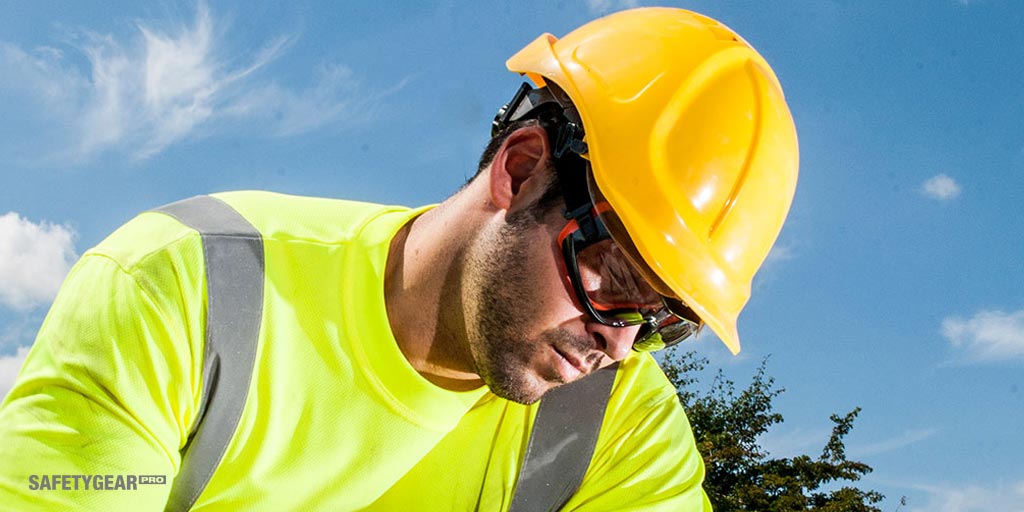

Some activities may call for the use of goggles instead of protective glasses. Learn the primary distinctions and when to use either piece of safety equipment.
Enhanced Safety From Protective Goggles
Rely on safety goggles to provide greater coverage and defense than a pair of protective glasses. An adjustable elastic strap is typical on goggles to create a snug, airtight seal. The close fit keeps your eyewear more securely in place and prevents errant objects, debris, liquids, and particles from entering from the sides or top of your face.
Goggles can fog easily because of condensation. To alleviate the issue, directly-vented goggles have holes straight through the frame on the top and sides. The perforations are small enough to keep out fine particles. Avoid using directly-vented goggles in environments that require protection from liquids, extremely fine particles, or chemicals.
Indirectly-vented goggles shield your eyes better. Vents are angled away from the front lens, keeping splashing liquids or chemicals from entering your eyewear. However, indirectly-vented goggles do not ventilate as well as directly-vented ones.
Protective goggles are often used by people who wear corrective specs. The larger-sized goggle fits over your glasses, and the use of a strap ensures you do not have to contend with two sets of arms for your dual eyewear. This safety eyewear is typically used in scientific labs or very hazardous jobs, such as cutting with a circular saw.
Safety Goggle Advantages
Opt for protective goggles with the correct safety rating in the following scenarios:
- You wear corrective glasses and do not want to remove them during a dangerous activity.
- You need protection from airborne infectious agents.
- You require an airtight seal around your eyes.
Safety Goggle Considerations
While protective goggles are excellent protection, some people do not prefer them for the following reasons:
- Discomfort from the strap tugging on your hair or squeezing your head and face
- Discomfort from a poor fit and bulkiness
- Annoyance because not very stylish
- Lenses fogging easily
- Clunky fit with your corrective glasses
Because of the above factors, many individuals choose safety glasses if goggles are not required for an activity.
Overview of Safety Glasses
Safety glasses provide sufficient protection for most activities that require protective eyewear. A pair sits on your face like sunglasses or everyday glasses with side arms over your ears. Many people find this eyewear more comfortable than protective goggles because glasses are more lightweight and easier to put on and remove.
You can get your protective glasses with a prescription to maintain clear vision during use. Some folks may attempt to wear safety glasses over their daily eyeglasses, but the practice is usually neither comfortable nor safe.
Protective glasses have lenses composed of shatter-resistant polycarbonate, providing stellar impact protection. However, protective glasses do not guard your eyes as well as goggles. Without the strap and large lenses, you do not receive the all-around protection and airtight seal. Still, many varieties have shields to defend your eyes from objects entering the sides.
Safety Glasses Advantages
Safety glasses will serve you for most of your protective eyewear needs because:
- You can put them on and remove them easily.
- You have solid impact protection.
- Frames are lightweight and often more comfortable for more extended periods.
- You can easily find attractive prescription safety glasses.
While you can find numerous options for protective glasses, ensure that the pair you buy has the proper safety rating for your activity and fits correctly.
Safety Glasses Considerations
Protective glasses are typically sufficient, but remember these points when selecting eye gear:
- Traditional protective eyewear can be large and unattractive. A plain pair of clear safety eyewear may give you the appearance of an uptight instructor.
- You should not wear your framed corrective lenses with protective glasses. Spend a little more money to obtain prescription safety lenses.
- Glasses do not have top shields, making your eyes more susceptible to flying objects or liquids.
While protective glasses do not offer the same degree of safety as goggles, you can acquire a quality pair suitable for most hazardous jobs or activities from reputable brands.
Summary of Safety Glasses vs. Goggles
Consider the primary differences between protective goggles and prescription safety glasses to determine which best serves your needs.
- Goggles provide the most comprehensive eye protection. Glasses protect you from direct projectiles and may guard your sides with shields but do not defend your eyes against objects from above or very fine particles.
- Both types of protective eyewear fog easily, particularly if you’re wearing a mask. When you remove your glasses or goggles and clear the lenses, your eyes are temporarily exposed. A cleaning rag or dirty hands might also contaminate your glasses or harm your eyes.
- Traditional safety eyewear tends to look dull and unfashionable.
- Protective goggles can fit over prescription lenses but still might feel uncomfortable.
- Protective glasses should not be worn with an additional pair of frames.
- Goggles can be too tight, painful, and challenging to put on and remove.
- Protective glasses are of lighter weight and designed to be more comfortable.
Protective eyewear may not be top of mind when undertaking an essential task, but selecting the correct equipment will save you from costly and annoying vision issues. Carefully select the proper protective gear for your home projects and work assignments to safeguard your vision.
Visit Safety Gear Pro to find the perfect pair of eye protection to complete jobs safely and with style. You can also find other PPE (personal protective equipment) essentials for your hands, face, ears, and body and lifesaving safety products.
FAQs
How long does it take to get prescription safety lenses?
Corrective eyewear must be crafted individually to order to fit the wearer optimally. Lens features such as anti-fog, coating, and tint take time to complete. Expect a protective glasses prescription to take 14 business days for manufacturing, then add the time for shipping.
What does Z87.1 mean on lenses?
Prescription Safety eyewear undergoes impact testing to ensure it can stop rapid projectiles. The American National Standards Institute (ANSI) rates protective eye gear as safe against impact hazards with the “Z87.1” or “Z87+” marking on the lens. Regular prescription glasses do not meet these standards.
How often should protective goggles or glasses be replaced?
Most PPE has an expiration date. Various companies state that protective goggles should be used no longer than three years. However, you should always get new corrective safety eyewear once you update your eyeglasses prescription. If your protective lenses become blurry or damaged, they are no longer safe, and you should get a new pair.
What is the OSHA standard for safety eyewear?
OSHA (the Occupational Safety and Health Administration) requires that protective eyewear meets the ANSI Z87.1 rules. OSHA expects employers to ensure that employees who wear corrective lenses have suitable prescription safety eye gear or eye protection that can be worn over prescription lenses without interfering with the proper position of either set of lenses.
What are the benefits of polycarbonate lenses?
Polycarbonate is shatter-resistant and thinner and lighter than plastic. The lenses are sturdier and don’t scratch as easily. Strong prescriptions do not require thicker lenses, which lessens distortion. Polycarbonate also offers complete UV protection for your eyes.
